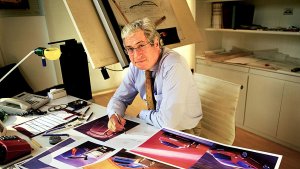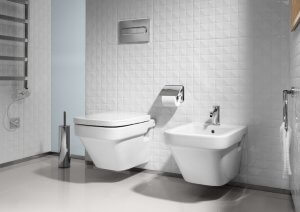Giorgetto Giugiaro: A Passion for Design

There’s no better example of having a passion for design than Giorgetto Giugiaro. This famous Italian designer is behind some of the most iconic cars in history. We’re talking about things like the 1974 Volkswagen Golf, or the 1984 Seat Ibiza. But those are just two examples of his genius.
Some other examples of car designs by Giugiaro include things like the spectacular 1972 Lotus Espirit and the DeLorean DMC 12. But we can’t stress enough that this is just a small fraction of his hundreds of designs. His work even spreads beyond just cars. He also designed cameras, like the Nikon F3.
He later went on to design the classic Nikon F5, as well as all their underwater cameras. Once we were in the digital age, he did the designs for their D2x, which was an entirely new world for Nikon. His last designs for the company were the D800 and the D4.
We’re going to show you the path this world-famous designer took, as well as some of his most iconic work.
Giorgetto Giugiaro: a life lived for design

Giorgetto Giugiaro was born on August 7th, 1938, in Garessio, a small town in northeast Italy. From an early age, he had a connection to the art world, because his grandfather was a fresco painter for churches and his father worked with oil paints.
The turning point in his life came when he decided to move to Turin. There, he studied at the School of the Arts in the mornings and took drawing classes at night. In 1955, when he competed in the school’s caricature competition, he was discovered by Dante Giacosa and his famous eye.
Giacosa was the director of Fiat’s technical center, and he could tell that Giugiaro had an enormous talent, based on the detail in his sketches. So, only a few months later, Giorgetto Giugiaro was already working as a style designer for this famous car manufacturer.
He worked as a designer at Fiat for four years. From there, he went onto manage the Gruppo Bertone’s style center. Nuccio Bertone’s design firm produced some of the designs for the Lamborghini car company, to give you an idea.
Giugiaro took the position at just 21 years old, which was a major risk for Bertone. But his risk paid off because it was during Giugiaro’s time there that they designed cars like the Maserati 5000 GT and various Alfa Romeo models.
After lending his talent to a series of design firms, Giorgetto Giugiaro finally decided to found his own company, Italdesign, along with his friend Aldo Mantovani. His firm has designed over 80 models for mass-produced cars. That’s not to mention the secret designs he sent to some of the biggest manufacturers in the world.
Famous cars designed by Giugiaro

There are lots of models he designed for mass production. Some of the most noteworthy include cars like the DeLorean DMC 12, the Maserati Bora, the 1972 Lotus Espirit, the Merak, the Quattroporte, the BMW M1, and the 1984 Saab 9000.
But this list goes on. He designed the 1984 and 1993 Seat Ibiza, the 1973 Volkswagen Passat, the 1974 Golf and Sirocco, the 1986 Lancia Delta, the 1980 Fiat Panda, and so on…we could seriously go on forever.
He also designed some prototypes like the Lamborghini Cala, the Bugatti models that ended up becoming the Veyron, as well as the Structura, the Maserati Buran, and the Volkswagen W12.
Italdesign decided to diversify its production and has created a special division for industrial designs. They’ve had projects ongoing in many different sectors.
Those sectors include everything from photography to cosmetics, and other things like telephones, clothing, furniture, lamps, bicycles, you name it. 2010 turned out to be an important year for Italdesign, because 90% of the company became part of the VW Group.
Giorgetto Giugiaro started the concept of the “folded paper” car design in the 70s. The idea there was to have cars with straight lines and sharp corners.
Giorgetto Giugiaro and the design of daily objects
The Pitagora door handle for Olivari

He designed the Pitagora door handle in the 1980s for Olivari. The simple geometric forms call to mind his most classic designs, and you can see the philosophy in both the cars and countless other objects he designed around that time. Olivari, the Italian company that made the handles, started manufacturing it again in 2014.
The Dama Collection for Roca

The main characteristic of this line of bathroom appliances is its ample dimensions. Each piece is large and robust and can bring personality and elegance to a home’s bathroom. Giugiaro used gentle, feminine lines for these, which gave all the pieces a sense of softness and warmth and made them feel inviting.
Marille, a pasta designed by Giugiaro

The pasta brand Marille asked Giugiaro to design a kind of pasta that they could mass produce. What did he come up with? Is it a wave? Well, there is an infinity of possible interpretations for the curving shape Italdesign developed.
The outer surface is flat as it is in traditional Neapolitan pasta. But on the inside face, this pasta has ridges for maximum sauce and flavor retention. The shape was designed so that it would keep its shape even after being cooked, and to be a kind of exhibition piece in Nouvelle Cuisine dishes.
Giorgetto Giugiaro also won the Car Designer of the Century Award for his career in the business, which he accepted in Las Vegas in 1999. On top of that, he also received the Leonardo Award from the then president of Italy himself, Giorgio Napolitano.
So, as you can see, this Italian genius is a massive figure in the world of contemporary design. It would be no exaggeration to say that his life has been informed by his singular passion for design. He has created some truly iconic pieces that will spark the creativity of countless people for generations to come.